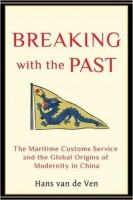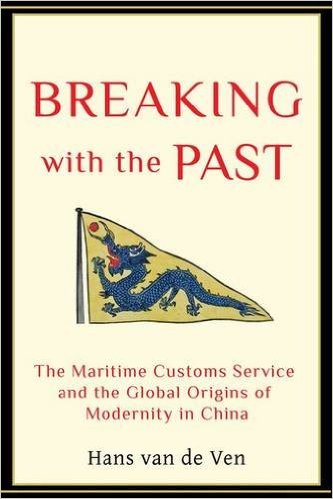 Author: Hans van de Ven
Author: Hans van de Ven
Publisher: Columbia University Press – 396 pages
Book Review by: Paiso Jamakar
China’s Maritime Customs Service was a powerful part of the central government for almost a hundred years, from 1854 to 1952. It started out as a governmental tax collection agency and general information service in 1854, and then over the years expanded its functions into many areas of business, finance and government.
Prior to the establishment of this agency which was largely staffed by foreigners, the Treaty of Nanking signed by the Chinese and British governments in 1842 had established the rules of foreign trade. This pact abolished the monopoly of the Canton System prior to 1842, which was centered in the southern Chinese port of Canton, now known as Guangzhou.
That treaty helped open up other ports, namely: Shanghai, Amoy (Xiamen), Ningpo (Ningbo) and Fuchow (Fuzhou), so that international business transactions conducted in these places brought in customs duties for the Chinese government.
The role of the Chinese Maritime Customs Service evolved over the years from just collecting customs duties and taxes to anti-smuggling activities, customs administration, diplomatic matters, harbor and waterway management such as erection of lighthouses and coastal surveys, postal administration, and representation in world trade exhibitions and fairs.
It even established and ran educational institutions such as the Translators College, where Chinese diplomats received training, and Chinese classics, novels, poetry and important books on the Chinese economy were translated into English. As the diversity of its duties grew, so did its influence and power.
There were large numbers of American, British, French, German, and Japanese members of the staff working at the Customs Service. Not only did one-third of the revenue that the Beijing government collect come from this source, foreign governments also benefited greatly with the repayment of their loans to China from this well-regulated agency’s streamlined operations.
This book is essentially the story of the Chinese Maritime Customs Service, and the economic internationalization of China. It is the saga of China’s entry into the global economy written by an outstanding scholar of Chinese history – Hans van de Ven- who provides readers a high level of historical research and details derived from a primary source: archives.
We give you an overview of the coverage of this book by listing its contents below, with an Introduction, seven chapters, and Epilogue:
Introduction
- The Birth of a Chameleon
- Robert Hart’s Panopticon
- The Customs Service During the Self-Strengthening Movement, 1870-1895
- The Rise of the Bond Markets: Customs Service Becomes a Debt Collector, 1895-1914
- Imperium in Imperio, 1914-1929
- Tariff Nation, Smugglers’ Nation; Customs Service in the Nanjing Decade, 1929-1937
- Maintaining Integrity, 1937-1949
Epilogue: Echoes and Shadows
The Chinese Maritime Customs Service literally transformed China and its relationship with the world, and this book is an outstanding account of that transformation.
Author:
Hans van de Ven is professor of modern Chinese history at Cambridge University. He has written extensively on China’s military history and the history of the Chinese Revolution.







